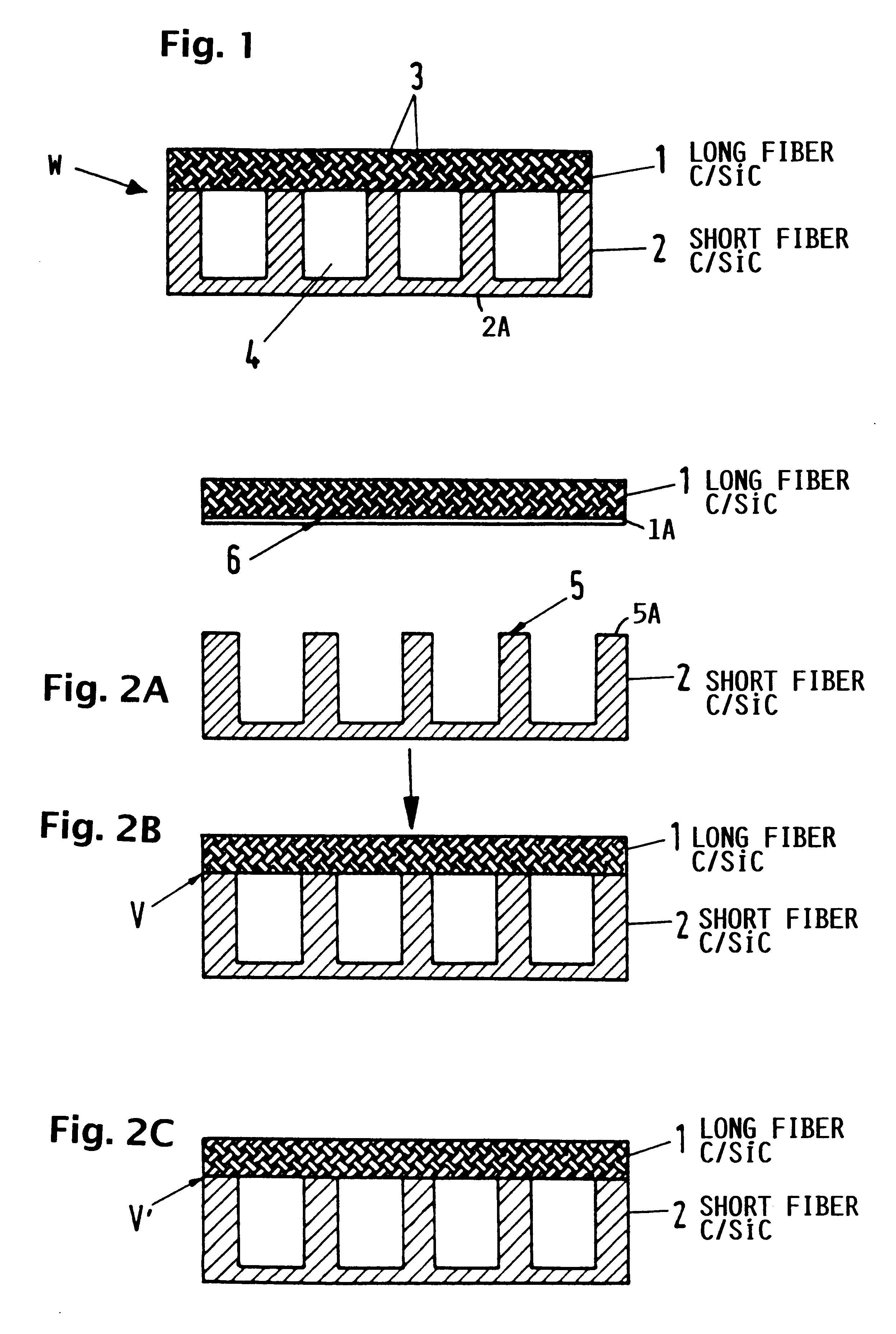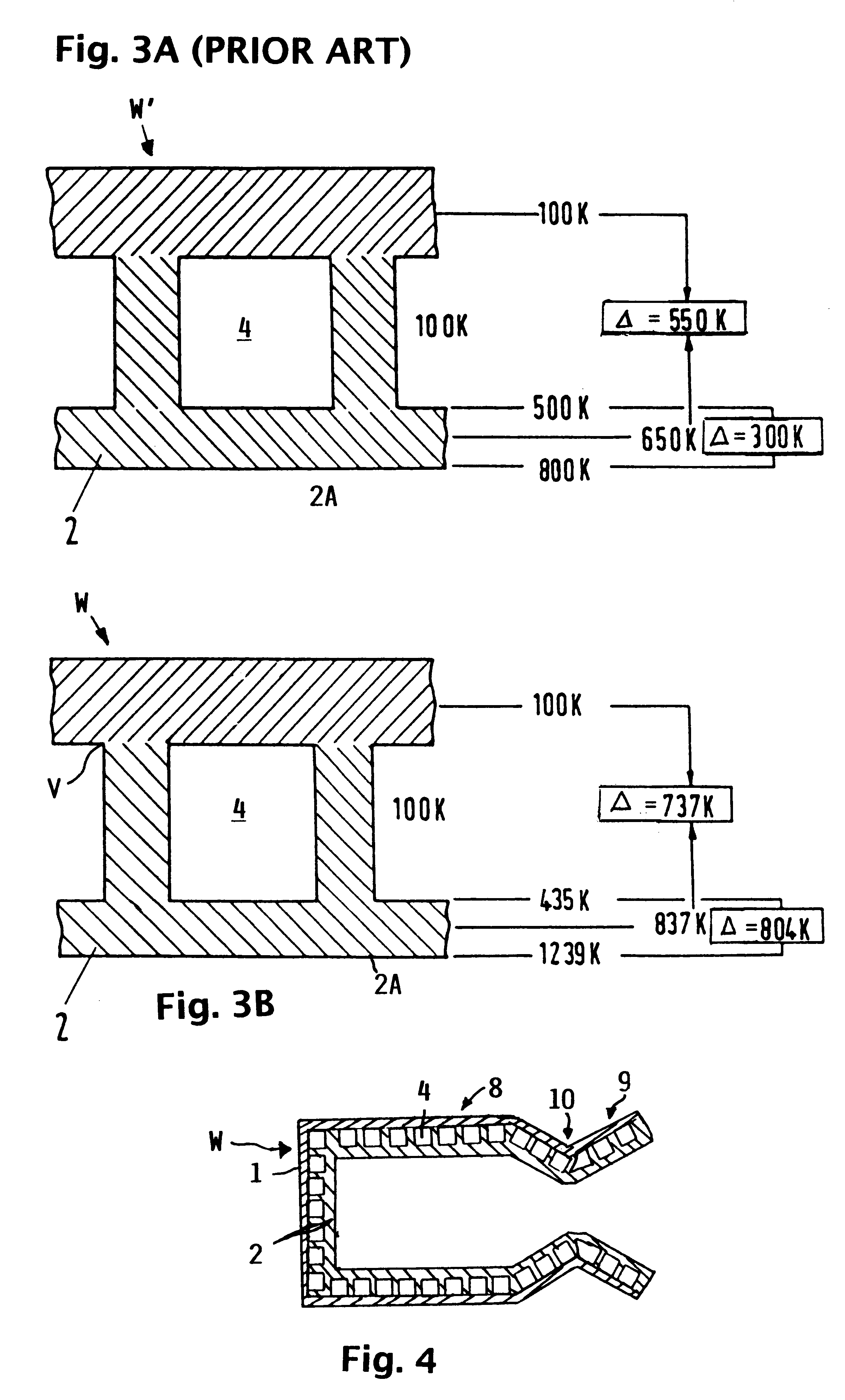Combustion chamber wall construction for high power engines and thrust nozzles
- Summary
- Abstract
- Description
- Claims
- Application Information
AI Technical Summary
Benefits of technology
Problems solved by technology
Method used
Image
Examples
Embodiment Construction
An example embodiment of a wall construction W for a combustion chamber and / or a thrust nozzle of a high powered engine, for example a rocket engine, is shown merely schematically in the drawings. As shown in the drawings, the wall construction W can be an essentially flat planar wall for a combustion chamber or thrust nozzle having a quadrilateral cross-section, but may alternatively be adapted to have a curved or circular configuration for a combustion chamber or thrust nozzle having a corresponding curved or circular cross-section. FIG. 4 schematically represents a high power engine, comprising a combustion chamber 8 and a thrust nozzle 9 including a constricted throat 10, which are all bounded by a wall construction W according to the invention. Auxiliary components of the engine, such as fuel and oxidizer lines, turbo-pumps, fuel injectors, gasifiers, and the like that are conventional in the art have been omitted from this merely schematic representation.
In each of the drawing...
PUM
 Login to View More
Login to View More Abstract
Description
Claims
Application Information
 Login to View More
Login to View More - R&D
- Intellectual Property
- Life Sciences
- Materials
- Tech Scout
- Unparalleled Data Quality
- Higher Quality Content
- 60% Fewer Hallucinations
Browse by: Latest US Patents, China's latest patents, Technical Efficacy Thesaurus, Application Domain, Technology Topic, Popular Technical Reports.
© 2025 PatSnap. All rights reserved.Legal|Privacy policy|Modern Slavery Act Transparency Statement|Sitemap|About US| Contact US: help@patsnap.com



